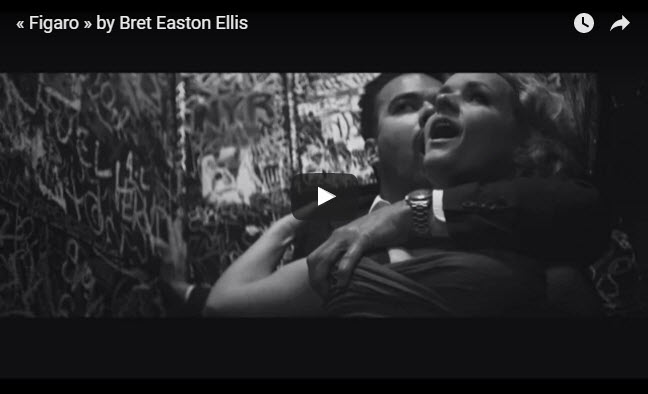I have to rant a little. Ok, a lot. I read an article from the 1/4/04 Baltimore Sun by music critic Tim Smith entitled Fine Tuning Its Future. In the article, Tim outlines what the BSO has planned for its future and how it expects to bring in a new audience through developing an overhauled concert experience.
To be fair, I’ll mention the good things first:
- I’m very happy to see the symphony get so much space in the paper (including a beautiful full page color picture of a painted violin).
- I thought Tim Smith did a good job making the article an easy read while keeping the reader engaged. He broke the story into several neat sections, each with their own heading.
- The large color photos were well selected and well placed, although the picture of Bobbie McFerrin leading the orchestra wasn’t really connected to the article so much as it was simply a nice picture of Bobby McFerrin.
Beyond that, the entire article was mostly a joke, there were no real details regarding how the orchestra plans to attract a new audience or what type of audience it hopes to bring in. According to the information in the article, here are the BSO’s big plans for improving on their existing 67% capacity attendance:
- They are going to add some more cocktail bars and food concessions like those that already exist. BSO management believes this will increase social interaction among patrons. Sure. That will get them to line up at the door. More $8.00 brownies and bad Champaign in plastic glasses. I suppose if the resulting social interaction includes complaining about the cost of food, then I guess they’ll get what they want. The cost of movie snacks already ticks me off, why should I want the same thing to happen at the symphony where my ticket already costs three times more than the movie ticket? Maybe I should sneak snacks into Meyerhoff Hall too. Instead, they should get a Starbucks concession and provide local cuisine: Baltimoreans eat seafood and drink beer.
- Management plans to install closed circuit TV’s to provide latecomers with a way to watch what they’re missing. The military bands in DC have been doing that for 20 years. It’s nice to see the BSO is joining the 1980’s.
- There is a plan to consider changing the white tie attire on stage for more than just pops concerts. Well that topic has been discussed at length in Greg Sandow’s column. It’s a good idea but notice the key word from the article: “consider”. In my book that usually means a lot of talk with little results. Why is it considered such a risk to commit to a good idea?
- The BSO plans to introduce an original concert series designed to attract a new audience. But the article quotes the BSO executive director saying that first, it has to be tested, and maybe they can implement something by the 05-06 season. It’s good to see they are right on top of things! After the testing, maybe they’ll have a final product by 07-08. Hey, maybe they can import some WalMart greeters to replace their current ushers? After all, that product has already been tested.
- The BSO plans to increase audience participation by offering more interaction via their orchestra’s web site. The Toronto Symphony has been doing that successfully for over a year with their Yak with Yara message board. Why don’t they just give them a call, find out how to get it going and do it. They certainly have enough people working on staff at the BSO (over 60 + consultants and volunteers); they should be able to get this up in a month.
According to the article, the remaining proposals fall into the category “under discussion”. So no matter how it comes across that these ideas may seem like realities, they’re still nothing more than ideas with no real direction or coordinated design. As a matter of fact, all of the BSO’s proposals to increase attendance and bring in a newer, younger audience won’t be implemented until at least a year at minimum. Given the past performance of how slowly this orchestra implements policy, it actually means three years before anything may take place. Unfortunately, Baltimore doesn’t have that much time to spare.
Another sincere problem standing in the way of the BSO reaching its true artistic and outreach potential is their music director, Yuri Temirkanov. Simply put, he has no business being a music director for a world class symphony orchestra. He’s much better suited to performing as a guest conductor. He is a sort of symphonic “one trick pony”. Although the limited repertoire he performs is excellent (his recording of Scheherazade with New York is my CD collection), it is still quite limited. I believe a music director is responsible for more than just creating a narrow artistic product.
How disinterested is Temirkanov with bringing in a new audience and the future of the BSO? When considering all of the changes for their future, the BSO executive director said that “[Temirkanov] has not been a key player in the discussions about the organization’s future”. So what exactly does Temerikanov’s $651,328 annual salary buy? Obviously, it doesn’t include helping the orchestra bring in new patrons, raise donations, or even talk to the audience ( because Temirkanov’s command of English is “limited”).
In general, I do commend the BSO for wanting to erase the distance between patron and performer; I’ve been advocating that position for months. But I’m afraid all of the BSO’s suggestions are geared toward bringing in an audience that is simply more of the same. The BSO believes that “[they] cannot lose the focus on the music”, which I agree is critical to their success. But what they need to do is reverse the static audience experience (which I’ve talked about at length in previous articles) and expensive barriers that force them to market toward a restrictive, declining audience. And they need to begin this now, not in 2005.


